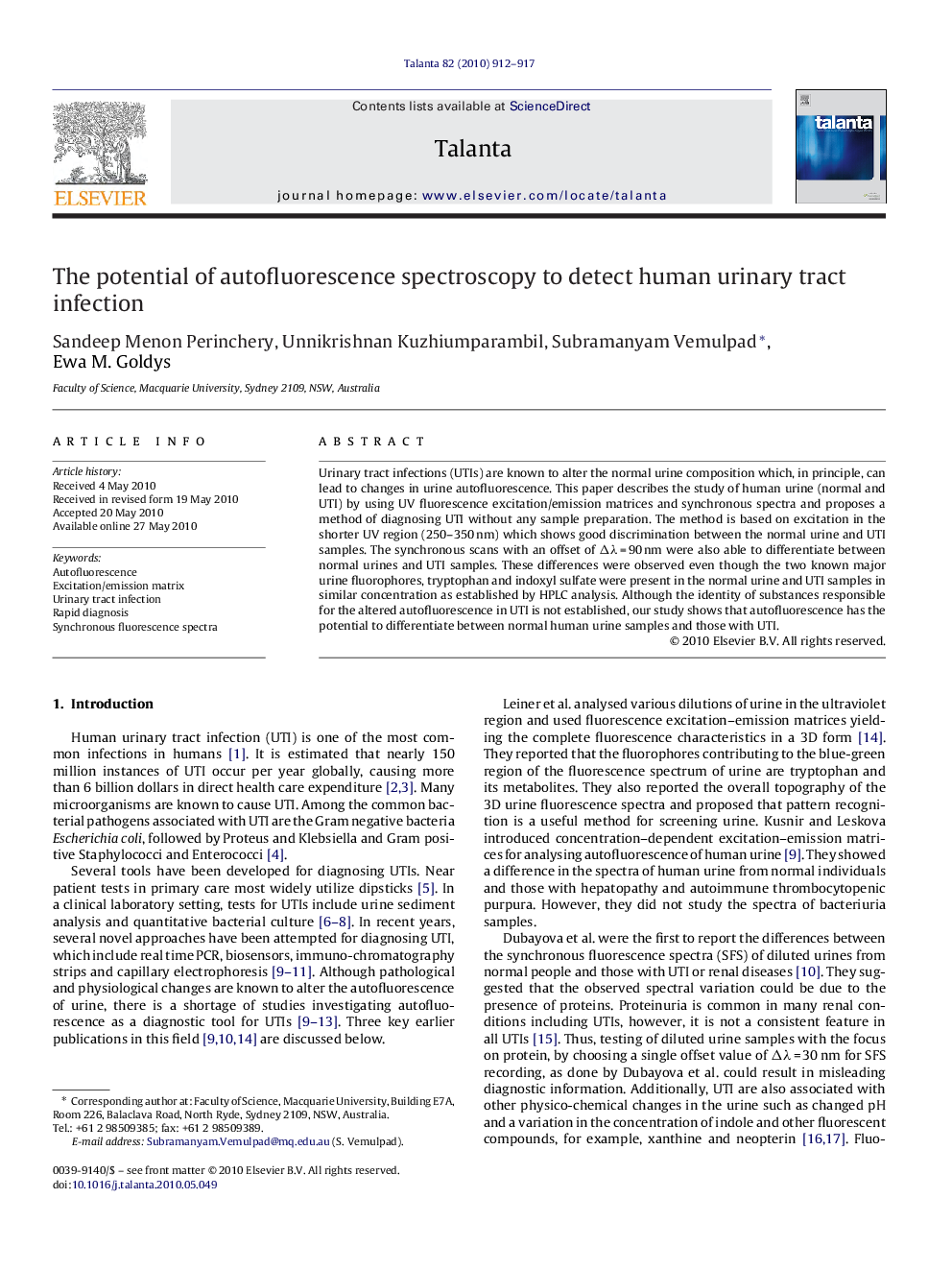| Article ID | Journal | Published Year | Pages | File Type |
|---|---|---|---|---|
| 1244588 | Talanta | 2010 | 6 Pages |
Urinary tract infections (UTIs) are known to alter the normal urine composition which, in principle, can lead to changes in urine autofluorescence. This paper describes the study of human urine (normal and UTI) by using UV fluorescence excitation/emission matrices and synchronous spectra and proposes a method of diagnosing UTI without any sample preparation. The method is based on excitation in the shorter UV region (250–350 nm) which shows good discrimination between the normal urine and UTI samples. The synchronous scans with an offset of Δλ = 90 nm were also able to differentiate between normal urines and UTI samples. These differences were observed even though the two known major urine fluorophores, tryptophan and indoxyl sulfate were present in the normal urine and UTI samples in similar concentration as established by HPLC analysis. Although the identity of substances responsible for the altered autofluorescence in UTI is not established, our study shows that autofluorescence has the potential to differentiate between normal human urine samples and those with UTI.
